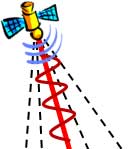Scope of monitoring
Quality of groundwater and surface water
BGS, in collaboration with the University of Birmingham, investigated the chemistry of groundwater and surface water by sampling:
- existing boreholes and wells (private and public supplies)
- streams
- purpose-drilled boreholes, some equipped with downhole chemical probes
Seismicity
Seismicity was investigated by seismologists from BGS and the Universities of Liverpool and Bristol. Urban centres (e.g. Blackpool, Preston) make seismic response noisy. In both study areas, obtaining meaningful low-magnitude signals requires a high-density array and experimentation with new sensors below surface, i.e. in boreholes.
Surface seismometers were deployed at monitoring sites in both Lancashire and Yorkshire for monitoring background seismicity for improved detection of natural earthquakes and also events induced by human activity. Novel instruments were also tested in newly-drilled boreholes.
Seismicity investigation in Lancashire
Atmospheric composition assessment
Atmospheric scientists from the University of Manchester and University of York (NCAS) conducted investigations into baseline occurrence and variability in atmospheric composition and monitored for evidence of change.
In Lancashire, background methane and carbon dioxide concentrations were measured continuously from late 2014 to 2020 at a fixed location close to one of the proposed shale-gas well sites. These, together with meteorological information, e.g. wind direction, characterised variations in both natural and existing manmade inputs to the near surface atmosphere before start of any shale-gas activity. Site investigations in the Vale of Pickering, Yorkshire also took place between 2016 and 2020. A suite of air-quality parameters (Particulate Matter, PM), NO2 (from e.g. generators, traffic, plant, flares, dust and materials handling), VOCs and non-methane hydrocarbons were also monitored.
Atmospheric composition in Lancashire
Atmospheric composition in the Vale of Pickering
Ground motion (subsidence and uplift)

In the areas of investigation, BGS carried out an analysis of how the ground surface has changed over time, either through natural processes or as a result of human development (mining, road building, etc). This used satellite-based radar data that allows millimetric changes in ground elevation to be detected.
Ground surface change analysis in Lancashire
Soil and Near–Surface Gas Monitoring
Soil and near surface gas monitoring was carried out by scientists from the British Geological Survey. Background concentrations of carbon dioxide (CO2), methane (CH4), oxygen (O2), hydrogen sulphide (H2S), radon (Rn) and CO2 flux (the rate at which the gas is coming out of the ground) were measured in the soil. These measurements provide baseline data collected prior to any operations in the area.
Soil gas monitoring in Lancashire
Soil gas monitoring in the Vale of Pickering
Radon in air
As part of the environmental monitoring investigation, measurement of radon in air was carried out by Public Health England (now UK Health Security Agency). The project involved measurement of baseline concentrations of radon both in the open air and in homes.
Radon monitoring in the Vale of Pickering
Contact
Contact BGS enquiries for further information.







